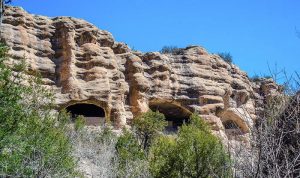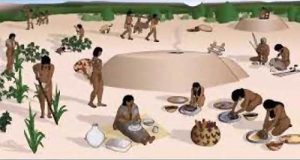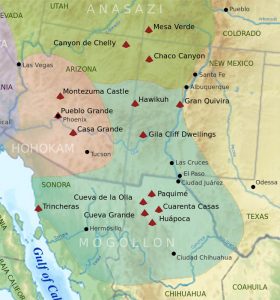The Mogollon Indians were one of four major prehistoric archaeological culture areas of the American Southwest and Northern Mexico. The Mogollon lived in the southwest from approximately 150 A.D. until about 1450 A.D.
The name Mogollon comes from the Mogollon Mountains, named after Don Juan Ignacio Flores Mogollón, the Spanish Governor of New Mexico from 1712-1715.
They are thought to be the first of the southwestern peoples to farm, build shelters, and make pottery. They also harvested wild plants and hunted small game to supplement their diet. Hunting became more prevalent when they took up the bow and arrow in about 500 A.D. They lived a sedentary village lifestyle near streams, often in canyons or other easily defendable locations. Their homes were similar to Hohokam pit houses though smaller and taller. The most prominent structure, called a kiva, served as the social and ceremonial center of the village.
The nature and density of Mogollon residential villages changed through time. The earliest Mogollon villages were small hamlets composed of several pithouses; however, by the 11th-century, surface pueblos became common. By the 13th and 14th centuries, they were also building cliff dwellings.
There are archaeological sites attributed to the Mogollon culture are in the Gila Wilderness, Upper Gila River, and the Mimbres River Valley in New Mexico, and at Hueco Tanks northwest of El Paso, Texas. Gila Cliff Dwellings National Monument in southwestern New Mexico was established as a National Monument in 1907 contains several archaeological sites.

Gila Cliff Dwellings, New Mexico courtesy Wikipedia.
© Kathy Alexander/Legends of America, updated December 2021.
Also See:
Native American Archaeological Periods
Native Americans – First Owners of America


